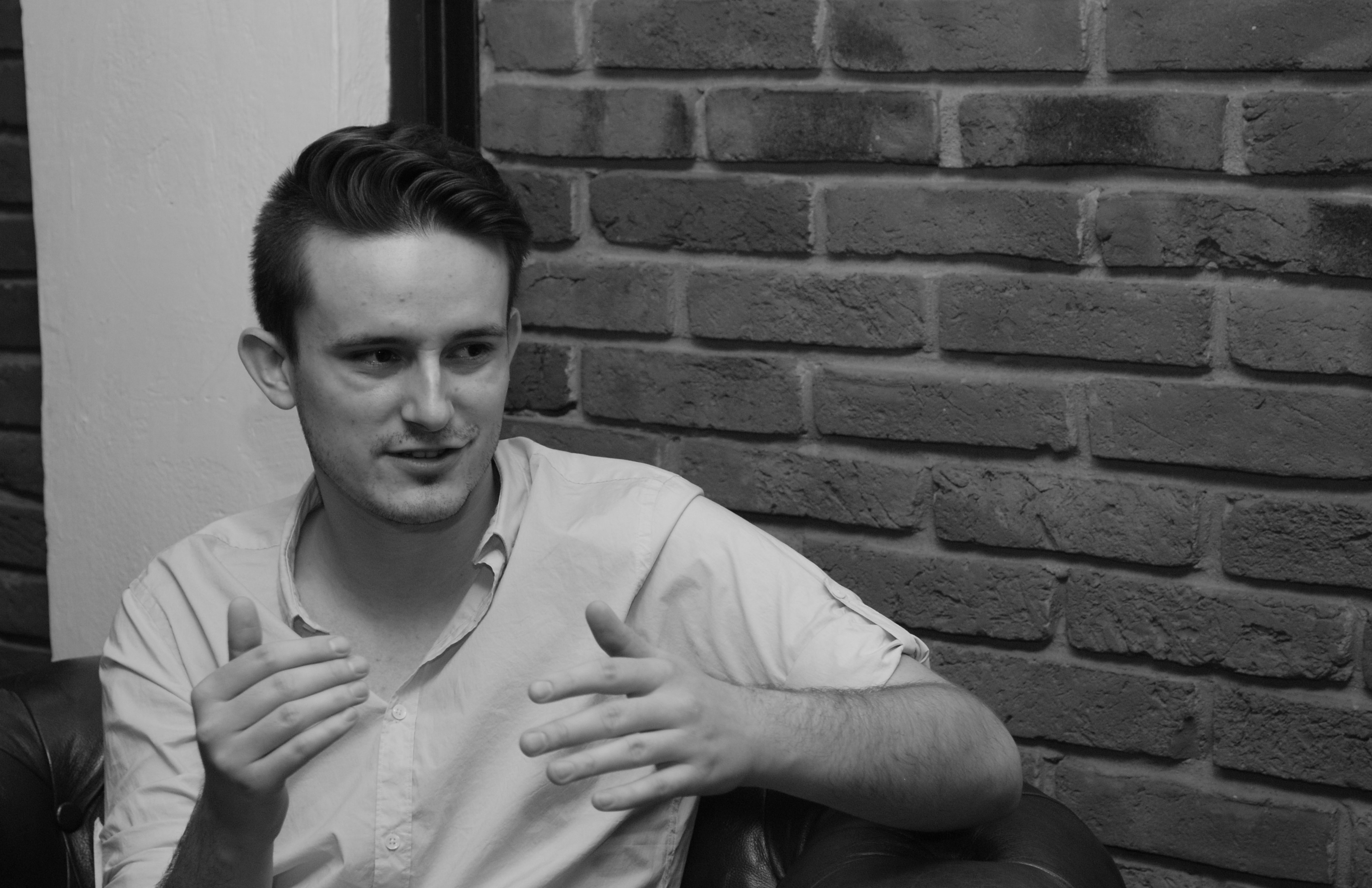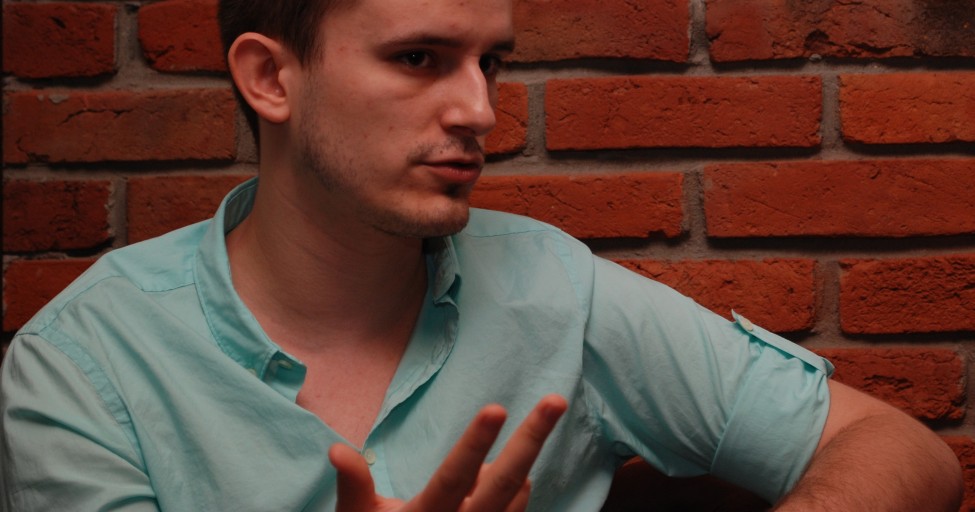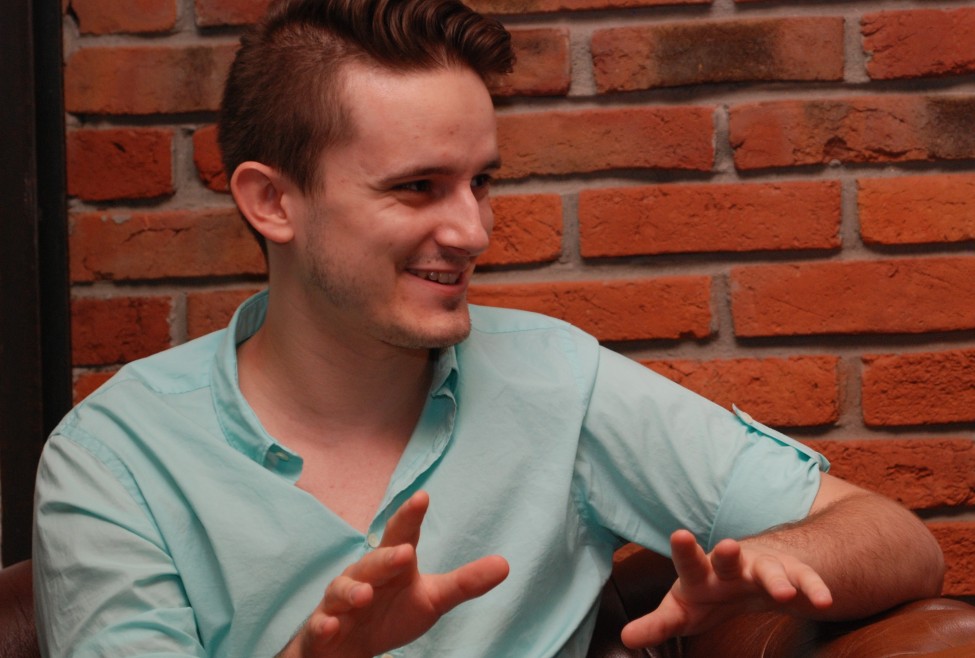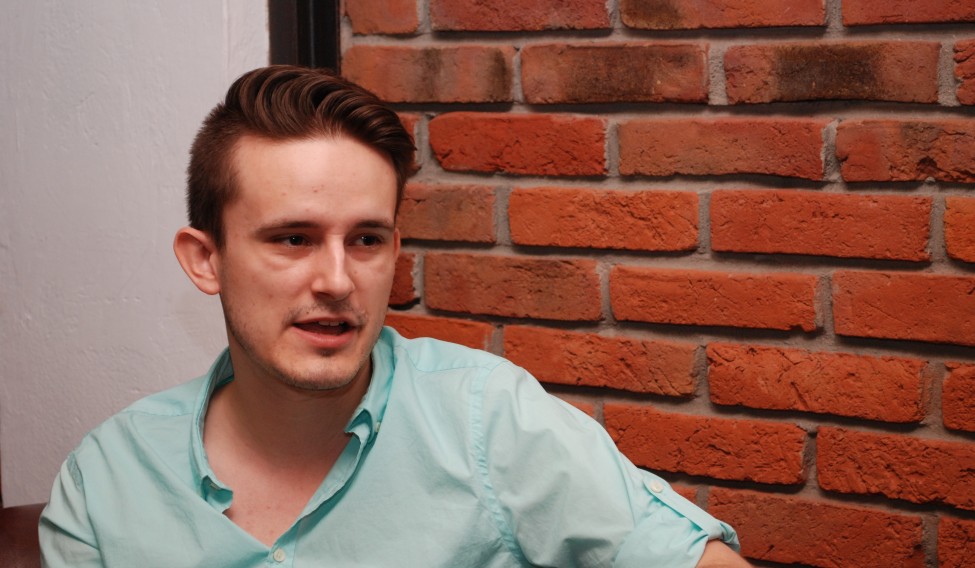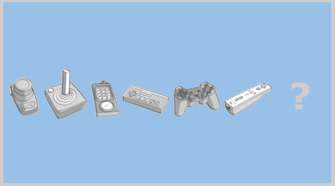Lee la entrevista en español
Mateusz Tomaszkiewicz is, since September 2015, Principal Narrative Designer in CD Projekt RED, but during the development of The Witcher 3 he was Lead Quest Designer. He joined the Polish studio seven years ago, almost at the same time the franchise with Geralt de Rivia was born. Tomaszkiewicz worked in the development of The Witcher: Enhanced Edition, The Witcher 2: Assasins of Kings, and in this last part and its coming expansions Hearts of Stone and Blood and Wine.
Tomaszkiewicz was the perfect man to tell us about the integration of The Witcher’s story in a first-time open world, the structure used to balance the main and secondary quests and how they planned locations and connected the decisions made by the players along the way to keep a consistent and enjoyable world. As we were talking, many issues came up and Tomaszkiewicz, even if slightly shy, didn’t avoid any of them.
Question.- The Witcher 3 is the first game in the series set on an open world. The plot has always been something very important for CD Projekt RED, however, when complex plots are presented on a sandbox structure there is a risk that the player loses track from the main line. Regarding design, how was the process of keeping the player focused on the main plot?
Answer.- In CD Projekt RED, we were aware of this issue when we started working on The Witcher 3 and we decided to use an open world. Back then we were already thinking what we should do in order to keep the players focused on the main storyline or, at least, not to lose track of it. We didn’t want them to get sidetracked with side quests and side activities and we designed a few things that would help.
One of them is those movies that we have put on loading screens. For example, when you load the game in Velen after some time doing side quests, the movie reminds you what was the last thing you were doing in the main quest.
The second thing is that we have connected part of the side quests with the main storyline. They are connected with the main plot so you remember you should go back and continue with it. In this regard, quest placement was also important. We have placed them in what we call «quest clusters.» We tried not to send you to the other corner of the map so you don’t get too distracted.
I think those things were what we used the most. Obviously, the main storyline is a big part of our game, it was very important for us and it is pretty long as well. From what I have seen so far – I am very fond of watching players play – I think it is working fine because they don’t get sidetracked that much. Well, maybe someone gets sidetracked but with Gwent [laughs] because it is a good and compelling card game.
Q.- The main and secondary quests flow well. How do you achieve this without imposing a too guided experience?
A.- This was a big issue as well because it is hard to guide a player in an open world. We had to change our approach of how we create objectives, what we have players do and how we present the story as well.
Since we can’t predict if you are going to follow a specific path because it is open and you can go wherever you want, we changed our quest design in some degree. To give you an example, in The Witcher 2 we knew you would have to pass some certain canyon or gorge, in The Witcher 3 we didn’t know; so basically we didn’t plan the events that would happen along the way if they aren’t connected to our objective. We rather connected to our objective the things that are important for the story so when you reach our goal you get the important story bits. On the path we predicted you might go we have also included some interesting things, but we made them optional, so they aren’t essential for the storytelling of the quest.
“In The Witcher 3 we are not forcing anything, but game balancing guides you through this order of locations. Of course you can mix it, it’s not very strict”
Q.- Another interesting challenge is transferring a defined universe (such as the one on Andrezj Sapkowski’s books) to an open world. How did this impact your work?
A.- When we sat down to design the game we first thought which areas Geralt can visit, we decided Skellige, Velen, and Novigrad. Then we thought, does he have to go in some specific order? Or can he visit any of them at any point? At first we had this approach that after the prologue you could choose where you wanted to go on the map, later on we changed this a little bit. Right now, when you finish the prologue you can go wherever you want but you have to buy a ship ticket in Novigrad first to get to Skellige. We decided to do this mainly for gameplay reasons. As we have said multiple times, we did want to have level scaling and we were worried that if you could go wherever you wanted from the start then we would have to balance these three areas to the same level so once you would have finished, let’s say Skellige or Novigrad, the two other ones would be too easy for you. So we are not forcing anything, but game balancing guides you through this order of locations. Of course you can mix it, it’s not very strict.
Another thing is that even it is an open world, Geralt’s goal is very firmly established: first he wants to find Yennefer, and then he wants to find his daughter, Ciri. He is very oriented on this goal and whatever he does we often remind you that she is important for him. There are situations in which we can bring this from the context; for example, Geralt is talking to the Bloody Baron in Velen and he talks about his daughter and this basically reminds you that you have a daughter of your own to find. The same in Skellige, when Crach is talking about his children, we are reminding you that you have a daughter of the same age, what she’s like, and so on.
So, yes, it is a story in an open world but at the same time it is very focused on Ciri. So in these terms, I would say it is very similar to Sapkowski’s books. In the saga, even if Geralt was also focused on finding Ciri, he got sidetracked as well, for example participating in some battles, but everything he was doing was focused on Ciri. And I think we were true to this.
Q.- The player can make decisions that affect the game structure, so many sites or quests might not be seen. Is this extra work important to give the player this sense of freedom?
A.- Yes, I think it is very important. For me, at least, our main design principle is immersion. You should be immersed in the game world, you should feel you are actually impacting what is happening, you are impacting people’s lives and how this world works. Up to some degree obviously, Geralt is not a king so he can’t impact things like the fate of nations on his own. I feel that giving the players this choice and doing this content that you might not see is very important because it improves this impression that you are really impacting what is happening. In my opinion, this whole fact that some people see some part of the content and some others don’t see it or see different content is also very cool because when they share experiences they feel as if they had played a totally different thing. I think this is something worth doing.
“In the saga, even if Geralt was also focused on finding Ciri, he got sidetracked as well, for example participating in some battles, but everything he was doing was focused on Ciri. And I think we were true to this”
Q.- When designing a particular quest, do you have the story and implement the quest afterwards or it is the other way around?
A.- When we started working on The Witcher 3 both were kind of parallel, but the story is always first in our company: the writers sit down, they prepare the basis for the story, of course we also make some general assumptions (this will be an open world, you will have multiple ways of traveling such as boat, horse…). Gameplay designers and programmers can work on these things without having the whole story design. Regarding quests, the story was for sure something we started with so we could actually start designing quests and side quests.
Q.- Geralt de Rivia has a strong personality, he doesn’t accept easily any mission. To what extent was this a constraint when designing the missions?
A.- The predefined character is very cool. He is very distinct and when you are playing you can feel he is a real person with specific goals, things he doesn’t like or stuff he wouldn’t do. It is kind of limiting in terms of designing the quests because we can’t let you do everything we would like you to do as a player. On the other hand, it is also a good mental training, so to speak, because we wanted to give you the largest amount of freedom when doing what Geralt could do. This was pretty cool actually because the choices we have designed are more believable. I feel that having choices that are totally different – for example in some games you have choices such as saving the orphans from the burning orphanage or fuel the fire [laughs]– is good for some games because it lets you craft your own experience, but those traces are less believable because they are not what a real person would do. In our game, we tried to craft choices that are hard to make, but believable for this character and his circumstances.
“In some games you have choices such as saving the orphans from the burning orphanage or fuel the fire. This lets you craft your own experience, but those traces are less believable because they are not what a real person would do”
Q.- As developers, you are probably very aware of what is being done in other studios regarding game mechanics and dynamics. What other titles caught your attention while developing The Witcher 3 or have influenced quest design?
A.- I was always looking up to some older titles that I was very fond of, very good RPGs that I really liked and that had elements that I wanted to incorporate in our game. For sure, games like the Gothic series; I always like the Baldur’s Gate games, even if I know it is a different kind of game but there were some RPGs elements that we could look up to. In terms of world building, for sure Skyrim and The Elder Scroll because they are excelling at this, and since it was our first open world game we were looking up at other games to see how they were doing things. From more recent titles placed in an open world, the game that I really liked was Fallout: New Vegas. I loved how they implemented the story and quests in the open world, and they didn’t have level scaling either and this was something I was looking up to. Probably for other developers in our company the games are different because they are focusing on different things.
Q.- Apparently, with The Witcher 3 you have paid close attention to what is being done in other genres. It seems that The Witcher 3 sometimes follows a structure similar to the one in Red Dead Redemption or GTAV, is this a conscious decision?
A.- It is hard to say, like I said, because many different developers were looking at different games. When designing quests I was looking mostly at RPGs, because quests are like the meat of an RPG, its core, and this was something I was focusing on. Maybe location guys… I know we have a lot of Red Dead Redemption fans in the studio so for sure some of them were looking up to it. I am pretty sure that when programmers and gameplay designers were working on the horse and the controls they were looking at Red Dead Redemption, because this is probably one of the best horse mechanics ever. Regarding GTAV, I played GTAV and most people in the studio did, but I don’t think I was consciously basing on this game. For me, GTAV is very different from our game in general, maybe in terms of map markers or the map system, but not in terms of quests. What I liked very much in GTAV was that the quests, most of them at least, had something interesting in them and can be remembered. This is something cool but the characters in GTAV were totally different from Geralt and from what we wanted to do.
“A game in an open world I really liked was Fallout: New Vegas. I loved how they implemented the story and quests in the open world, and they also didn’t have level scaling and this was something I was looking up to”
Q.- Obviously GTAV and The Witcher 3 are very different. We compared them for one reason: we thought that beast hunting and robberies were similar in a certain way. In both cases we have to investigate ahead and pave the way. Do you agree?
A.- Yes, actually this is an interesting observation. Nevertheless, I think we were not consciously basing on GTAV in terms of monster hunting. For all our Witcher games we wanted to show Geralt as a monster hunter, but in previous games it didn’t go actually as we had planned so in this game we wanted to get it right. So we sat down and thought: he is a monster hunter, how would he work if he was real? How would he approach the task? He would do the investigation, he would prepare some special oils and some special equipment, and only then he would lure out the monster and deal with it. This happens with monsters that you can’t just kill, that you have to do something special to defeat them.
So I think the similarity comes in the approach of the characters and what their professions are. In GTAV our characters were also high experts, so I think they might be similar in terms of how this was executed and how they approached the fact of preparing how it should look like. They did have these specific steps and we had the same thing but I think the similarity comes in because we wanted to show this profession in a very detailed manner.
Q.- The action points of NPCs have been thoroughly worked, how complex are their routines? And how was the process of implementing them?
A.- The biggest challenge for us in this regard was that we had this huge world to fill with communities. The Witcher 2 had much fewer communities, I think there were five big communities and right now we have over a hundred, two hundred even. So it was a challenge to do it keeping the same quality level, looking believable, increasing your immersion, and having it ready on time. We had to change our tools and design some new ways to implement this. We had to change our approach a little bit and this was pretty complicated, I would say.
However, we kept the same principles so we wanted the NPCs to perform the night cycles, to cover when it is raining and so on. We added more reactions, we wanted them to react to what Geralt does, we added a reaction for stealing when there are no guards around, we also added a reaction for guards when you are trying to assault someone, we have designed more work animations for NPCs and we added more action points so the work animations are less repeatable. In our daily work, we had a team dedicated only to doing this in The Witcher 3, so they went through the whole game and made it as good as possible.
“The Witcher 2 had around five big communities and right now we have close to two hundred. So it was a challenge to do it keeping the same quality level”
Q.- In CD Projekt RED you emphasize that each quest has its own consequences, how are quests structured so that the player can notice those consequences?
A.- We have two kinds of consequences: some of them are direct so you can see them straight away and some are long-term consequences so you can’t anticipate what will happen because they take place much later in the game. With the latter, we remind you what choice led to a certain consequence with an animated flashback movie. The thing is that we remind the players what led to these consequences, if not with the movie we show it with a dialogue.
Q.- Open spaces impact game mechanics and that can be noticed during combats, how do you choose the locations and what aspects you consider?
A.- I think this is very important for quest pacing. Pacing means that you don’t have too many dialogues one after another and you have some gameplay in between. So you feel that this setting away is enjoyable, the places of the quests are not too far from one another, and you feel the dynamics of the quests. Let’s say that you have a quest where you have to chase someone down or a quest with a certain amount of urgency; if we place the point of the quest where you need to get urgently very far away, then you might get sidetracked along the way and you totally lose the feeling that this is important and you need to hurry up. So when we are doing quests we try to place them closer. This is then one aspect, pacing.
A second aspect is the combats you mentioned. When choosing places for combats we need to make sure that there is enough space for the monster we place in it. For example, if we place a griffin, a flying monster that needs a lot of space, there cannot be too many trees because he could get trapped on them or he would have troubles with locomotion, so we have to pick right spots. If we have issues with combining good pacing and finding a good spot, we request the location team to prepare a specific place for us; for example, to make a clearing in a forest so we can put this griffin fight there since it can’t be moved further because we would break the pacing I mentioned before.
Another thing is placement of quests in the space. We try to place them in these clusters I mentioned earlier so when you arrive to a new place you feel like you have plenty of things to do and they are inviting you to explore the world. Of course we have quests that are not in these clusters, that you can find while exploring the world but we try to make sure that we give you incentives to do this.
Q.- In your opinion, what was the most difficult task regarding design?
A.- I think the biggest issue in quest design was to combine this open world approach with the amount of quests that have consequences and not to make those consequences from different quests cause issues. For example, in one quest the character can die but someone else was doing a quest with this character and we have to take this into consideration. Another example, some quests could be overlapping; for instance, some fighting going on at a specific spot that you abandon in the middle and go with another NPC on a quest to the same spot.
This is something very different from GTAV because they have one quest at a time so if you start a quest the rest of the quests in the world are inactive until you finish it. In The Witcher 3 they are all active at the same time which makes it a lot more complicated for the developers to implement. So basically we had to have all this into consideration, in some quests we had to make changes so they didn’t overlap and this gave us a lot of headaches because it generates many bugs. However I think we managed this biggest challenge in general.
“Hearts of Stone and Blood and Wine will be big expansions comparable to the ones released for older games like Swords of the Coast for Baldur’s Gate, like old school versions of expansions of games”
Q.- I am assuming cooperation among departments is crucial in a game like The Witcher 3 where so many technical areas work together.
A.- It is a good assumption [laughs].
Q.- How is this arranged?
A.- We are all doing everything we can to improve communication among teams. It’s not perfect, it can always be better. We tried working with newsletters so we know the new things arriving and how they are going to impact our work. For example, something that has a huge impact on our work is cooperation with the location team because we don’t have location finalized and we sit down and start working with it. First we get this very rough version of locations – only terrains and some blocked out buildings – something very basic where we implement and every change they make impacts our job. For example, if they move the terrain to rise some hill and all our action points and triggers are underground, they stop working. Therefore, it is crucial that they inform us about these things. I remember one of our producers for locations that used to send us the schedule of when they will be reworking certain parts of the map, which was very convenient because we knew when we had to readjust those quests.
Quest design is responsible for connecting a lot of assets to the game. So, for example, when the character artist completes a character model we have to implement it in the quests and replace the placeholders we had with the right ones. It is also important that they inform us about the progress of their work, so we know when something is done, that we can connect things or use something in particular, or that we need to change something because we used something they didn’t like, and so on. Obviously we also need to communicate with them because our work impacts theirs as well. So, for example, if we need something done or changed or if we request some assets, it is crucial that we inform other departments about it. We had a specific production list of the things that designers were requesting that could be checked by anyone in the studio so they knew what was needed for a specific quest.
Q.- You are working on an expansion for October (Hearts of Stone) and another one for early in 2016 (Blood and Wine), what can you tell us about the latter without getting fired?
A.- Well… [laughs.] I can tell you they will be pretty awesome, they will be pretty big, these won’t be small DLCs like the ones already seen, they won’t be one quest. It will be big expansions comparable to the ones that used to be released for older games like Swords of the Coast for Baldur’s Gate, like old school versions of expansions of games. This I can tell you without getting fired [laughs.]
 Photographs by K
Photographs by K


